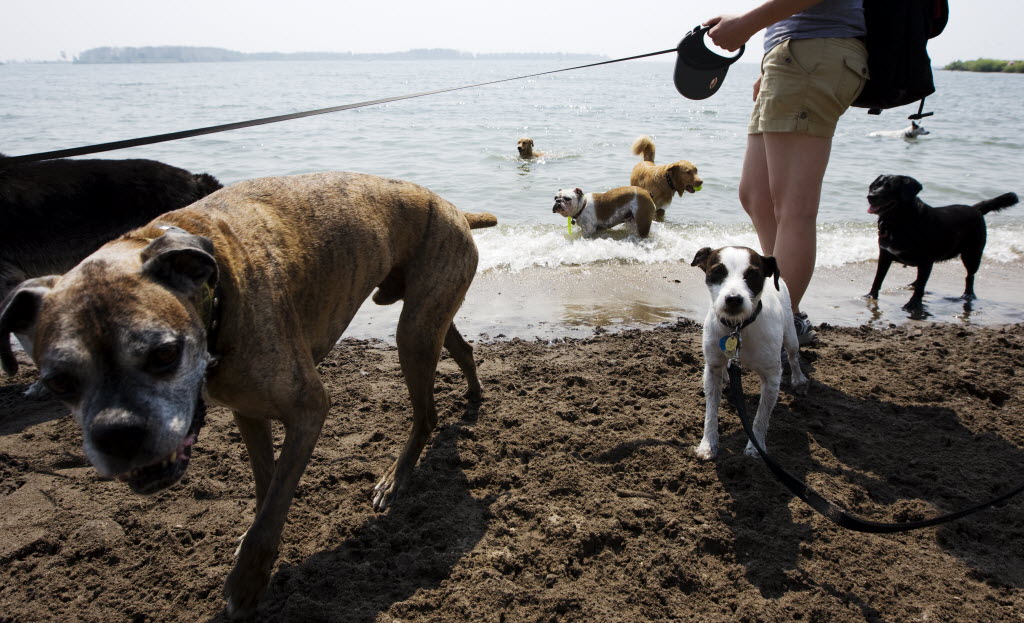TORONTO – Sizzling in the summer heat? There’s a good chance your pet is, too.
As soaring temperatures create stifling outdoor conditions, Canadians are being cautioned to look out for their furry friends.
"It doesn’t even have to be that hot out for your pets to get heatstroke or get heat stress," says Marcie Moriarty, general manager of cruelty investigations at the British Columbia SPCA.
With the mercury rising, owners are advised to keep their pets in the shade, provide them with plenty of water, limit their food and exercise, keep them off asphalt that can burn paws and never leave them alone in parked vehicles.
"Literally the insides of the animal cook," says Moriarty of pets unattended in locked vehicles. "As little as 10 minutes can spell disaster."
The society has already dealt with one death and three near-misses from animals left in cars recently, and receives hundreds of complaints on the matter every summer. While provincial laws on causing animal distress exist, Moriarty says there aren’t enough resources to enforce them as widely as they should be. She urges common sense on the part of the owner.
"If you’re hot in the car, what do you think your pet is…They can’t roll down a window or get out."
Animal welfare groups and veterinarians work every summer to teach owners that their pets just don’t sweat like humans do.
"It can be very subtle differences in temperature or activity that really push them over the edge," says Shane Bateman, who teaches emergency and critical care medicine at Guelph’s Ontario Veterinary College.
He explains heatstroke as an inability for animals to cool their body rapidly, particularly when they find themselves in closed spaces, but also when they over-exert themselves on a particularly hot day.
Signs to watch for include hard panting, muscle twitching, an anxious or dazed look or even vomiting.
"The danger is really kind of silent," says Bateman, adding that an animal’s temperature rising above 41 C can spell major trouble. "That elevation of core temperature cause some of the organs to start breaking down."
Owners dealing with overheated animals should move them into a cool environment, hose them down or wrap them in a cool towel, and take them to a vet as soon as possible. A vet would stabilize the animal, monitor its temperature and may use intravenous fluids to cool them down.
"There’s nothing magic unfortunately," says Bateman. "We essentially are on a wait-and-see to find out which organs have been most affected."
While dogs are most commonly at risk due to their outdoor tendencies, any mammal – cats, rabbits, guinea pigs and ferrets included- is at risk of overheating if left in sharp sunlight or small, hot spaces.
But that isn’t the only danger with a scorching summer. Animals with little or no fur can get sunburnt when the rays are too sharp. Sunblock helps, but keeping an animal in the shade is even better.
Zoos across the country are also taking steps to ensure their residents stay comfortable during the hot months.
The Toronto Zoo provides extra shade, fans, misters and the occasional hosing down to those who need it. In extremely high temperatures, it moves some animals to cooler enclosures as a precaution, as was the case with some snowy owls this week.
"We just don’t want to push any animals where we don’t have to because obviously the animal’s welfare comes above anything else," says zoo veterinarian Simon Hollamby.
On particularly steamy days the zoo also postpones its bird shows to keep the feathered residents from excessive exercise in the heat. Visitors meet other animals instead. Veterinary operations are also planned for cooler times as animals have a harder time regulating body temperature under anaesthesia.
For the most part though, the wild animals are far more independent than their domestic counterparts.
"A lot of the animals will make the necessary changes themselves, rather than relying on us to do it for them," says Hollamby.
It’s a similar story at the Assiniboine Park Zoo in Winnipeg.
"They’ve got some of their own strategies to help keep cool," senior veterinarian Chris Enright says of the animals under his care.
Those include restricting activity during the day, laying down in the shade, paddling in pools provided and even panting like dogs. Some animals, like the zoo’s Red Pandas, get air conditioned enclosures mimicking their natural mountainous habitat, while all the zoo’s occupants have access to plenty of water.
"We’re keeping a close eye on them because we realize it is hot and we want to make sure everyone is comfortable," says Enright.
And for some animals who want to stay extra cool, the zoo provides popsicle-like treats made from fruit, blood and even frozen rat.
"They’re little rat-sicles I guess," says Enright. "They’re playing with their food and we don’t mind."




Comments